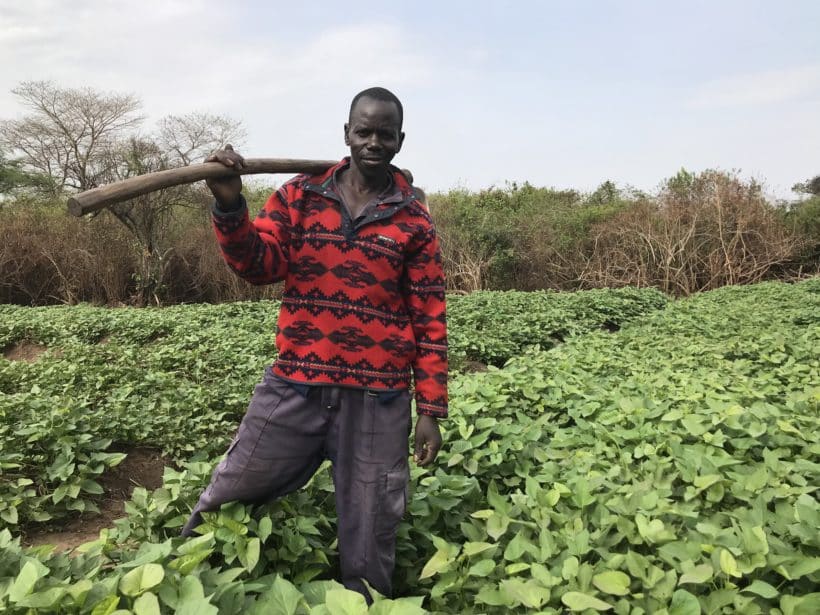
By Agnes Kalibata, President of AGRA & Claudia Sadoff, Executive Managing Director of CGIAR
The repercussions of the global food crisis, coupled with a protracted drought and a challenging pandemic recovery, make the forthcoming harvest season in many parts of Africa even more critical for governments and farmers.
With more than 37.5 million people across the Horn of Africa alone on the verge of selling their possessions to be able to afford basic nourishment, the proper functioning of food systems to harvest, process and distribute food is presently a matter of life or famine.
At the same time, today’s “perfect storm” will not be the last to upend African agriculture and food security, as climate change continues to bring yet more unpredictability, demanding constant innovation.
There is a window of opportunity, small as it might be, in the next three to 12 months for African decision-makers to invest shrewdly in scaling up proven solutions that can both avert the worst of the current crisis and build long-term resilience.
In recent decades, our two organisations have worked closely with national partners to develop, test and deploy innovations that improve smallholder productivity, livelihoods and resilience to shocks in line with the African Union’s Comprehensive African Agricultural Development Programme (CAADP) Malabo Commitments.
African countries now urgently need to fast-track the uptake of agricultural solutions with the greatest potential for immediate impact as well as lasting sustainability at the scale of millions of farmers.
Several innovations – if deployed now – could offer immediate benefit from high-yield, nutrient-dense and drought-resistant varieties, to better agronomy and soil management. At the same time, real-time monitoring of food and input price volatility can best inform effective regional and national policy responses.
CGIAR has done extensive research in food and input price volatility monitoring, with the Excessive Food Price Volatility Early Warning System, and Food and Fertilizer Export Restrictions Tracker, developed by the International Food Policy Research Institute (IFPRI), helping international agencies to identify and coordinate around areas of concern.
At a country level, AGRA translates this information alongside other sources into an easy-to-use monthly Food Security Monitor for policymakers.
However, current monitoring tools and early warning systems cannot yet precisely assess the impacts of global shocks on domestic food security and nutrition, or the impacts of domestic shocks at the household level.
Scaling up the model for real-time tracking, while also developing more country-specific analyses, would equip governments with the data needed to minimize disruption to food supplies, direct food assistance programs, and anticipate malnutrition or social unrest.
Similarly, improved, high-yield and underutilized local crops are another weapon in the arsenal that can be deployed at a greater scale both to fill production and nutrition gaps now while also reducing dependence on a handful of staple cereals and food imports in the long-term.
The wheat compact under the Technologies for African Agricultural Transformation (TAAT) initiative, supported by the African Development Bank and implemented by CGIAR, has already deployed more than 30 heat tolerant varieties benefitting 1.5 million people. Further gains are planned under TAAT II in support of CAADP while the Center of Excellence in Africa’s Seed Systems (CESSA) launched by AGRA provides an opportunity for countries to strengthen seeds systems.
Finally, innovations that address and fill the gender gap in African agriculture can have an instant impact by fully leveraging the extensive role of women as producers, entrepreneurs, caregivers and mothers.
Research indicates that farm yields would increase by up to 30 per cent and hunger would fall by up to 17 per cent if women had the same access to productive resources as men.
AGRA’s VALUE4HER initiative includes Africa’s first digital marketplace designed for women, who own a third of small and medium enterprises, and provides a network for market access, training and collective action. In the platform’s first two years, a total of 165 women-led businesses reported increased incomes as a result of improved market access and enhanced technical business management skills, which becomes especially important in times of crisis.
And part of CGIAR’s new research portfolio is the Excellence in Agronomy initiative, which aims to unite 20 public and private partners to reach a million farmers with gender-responsive agronomic solutions. This is one of CGIAR’s 32 new initiatives that include a scaling component to ensure new and existing innovations get into the hands of farmers.
The unexpected events of the past two years have significantly altered the trajectory of Africa’s agricultural development. From accelerating the digitalisation of marketplaces and on-farm training during the pandemic to forcing countries to seek wheat and fertiliser alternatives in the ongoing Ukraine conflict, necessity has triggered urgent innovation to adapt to evolving circumstances.
As the most important actors in African agriculture unite at the African Green Revolution Forum (AGRF) in Kigali, we must now zone in on the tried and tested solutions that can protect the most vulnerable and develop the strategies to maximise them with utmost urgency.